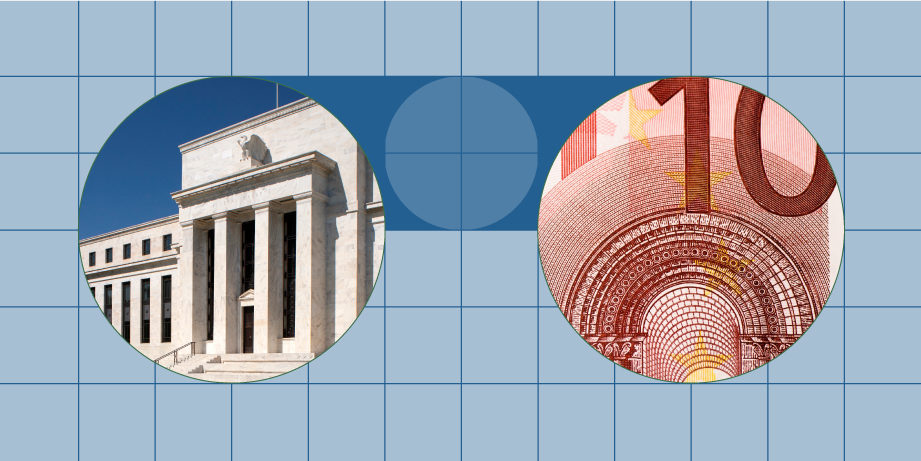Market commentary equities: Is high volatility the new normal?
Central bank policy was in focus once again in the third quarter of 2022. Fears that inflation had not yet peaked led to a radical trend reversal in the middle of the quarter and shows that increased volatility results in greater dispersion of factor returns. Hence, risk management is key.


Mark Frielinghaus
Portfolio Manager Equities
The third quarter of 2022 once again showed how severe and short-term investment styles can trigger sharp corrections. The dominant theme was central bank policy, specifically the interest rate hikes by the US Fed and other central banks combined with expectations for the medium-term direction of inflation rates. While the month of July was characterised by a generally positive market sentiment with rising stock markets, declining interest rate levels and rather moderate expectations regarding future key interest rate hikes, a radical change in sentiment took place in August. Essentially, the pivotal point was the question of whether inflation had already reached its peak or not. In the course of the third quarter, investors changed their expectations. Until the beginning of August they believed inflation had peaked, but then, under the influence of various macroeconomic data and the communication of the top monetary authorities, especially Jerome Powell, their view had shifted. This binary question ultimately resulted in a cascade of further developments on the bond and equity markets, with a significant influence on the success of individual investment approaches as well as investment styles.
Factor returns: much of the volatility remains below the surface
After the European stock market gained more than 10% in the first 6 weeks of the quarter, the markets gave back all their gains from mid-August until the end of September. The interest rate trend was mirrored, with 10-year government bond yields first falling significantly, to 2.5% in the USA and 0.7% in Germany, before rising to 3.6% and 1.9% respectively by the end of the quarter. This massive trend reversal was not without consequences for investment styles as well as market segments in the stock market.
In the phase of subdued inflation expectations, the growth and quality styles were able to gain 4% against the broad index until the beginning of August. Conversely, the value style lost more than 3% relative to the index. The exceptionally high spread between the investment styles within such a short period was subsequently completely closed shortly before the end of the quarter due to rising inflation and interest rate expectations. This example impressively shows how short-lived factor trends can be and how much volatility remains under the surface when analysing these return time series in low frequency (e.g. on a quarterly basis).
In addition to the aforementioned growth factors, which suffered particularly due to higher interest rates and the associated discounting of future profits as well as a slowdown in economic growth, smaller and medium-sized companies also came under pressure in August and September. In contrast to growth and quality, the size factor showed a significantly weaker performance and ended Q3 with an underperformance of 5%. The mix of different styles as measured by the multi-factor Index also consistently underperformed the overall market, but especially in the phase of falling markets, recurring recession and interest rate fears.
Figure 1: Style returns MSCI Europe, relative, Q3
It can thus be seen that a phase characterised by short-term trend breaks has a negative impact on the performance of factor strategies. In retrospect, perfect timing of style factors would have been most promising, while balanced approaches with constant or long-term dynamic allocation to factor strategies underperformed.
Higher dispersion of factor returns due to increased market nervousness
Furthermore, the question arises to what extent the factor returns correspond to a normal fluctuation or whether the dispersion of factor returns in recent years is above average.
A 10-year retrospective shows that factor returns in the past 18 months since the outbreak of the Corona pandemic have been significantly more dispersed than in the years before. Only 2016, the year of Brexit and the Trump election, is an exception here. Thus, in the current environment, there is an exceptionally high risk of implementing a singular factor strategy, such as momentum or value. Is this merely an expression of an overall increase in the risk level on the equity markets or has the dispersion of factor returns risen independently of the general risk level of the equity markets?
To answer this question, we also compare the implied volatility of European equities measured by the Euro Stoxx 50 volatility index and the factor volatility for Europe as a whole over the past 10 years.
Figure 2: Factor volatility and equity market volatility Europe Q3
The factor volatility of European equities is represented as an equally weighted average of different factor strategies in a long/short basket. The factor strategies used include value, growth, earnings momentum, price momentum, risk, quality and small caps. The different behaviour in the years before 2020 and in the following 18 months is striking. While the volatility of the market recorded short-term increases in most years, this was much less noticeable in the fluctuations of the factor returns. More recently, however, the general market nervousness seems to be increasingly reflected in the dispersion of factor returns.
Discontinuation of quantitative easing drives inflation to new highs
So what could be the reason for this different risk sensitivity of factor returns to general market risk? On the one hand, seemingly obvious causes could be the outbreak of the Corona pandemic and the recovery from this crisis. Although these connections are intuitive, an extension to underlying economic changes seems more plausible. A key difference between the phases of low factor volatility (here: 2012-2020) and the phase of high factor volatility (since 2020) is the change in inflation rates and, as a consequence, in central bank policies to maintain price stability.
In the course of the past 10 years, the quantitative easing of the central banks, which was launched in particular after the financial market crisis of 2008, has been a continuous pillar of support for the stock markets. Although there have always been short-term slumps associated with volatility spikes on the stock markets, these were usually of very short duration, especially compared to the crises of the last century, the Great Depression, the stagflation in the 1970s or the TMT bubble at the end of the 1990s.
On the one hand, the central banks provided a permanent influx of cheap liquidity and built up their own balance sheets many times over by buying securities. On the other hand, the flood of liquidity did not remain without consequences for the interest rate level, which moved with little fluctuation towards zero interest rates or even into negative territory. This meant that risky equity investments were basically without alternative and instead of a regular cyclical economic development with ups and downs, a super cycle of economic expansion set in, which led the stock markets to liquidity- and sentiment-driven all-time highs.
This secular trend reversed in 2020/21. For the first time, price levels rose significantly in all industrialised countries. Starting with the energy and commodity markets, which recorded price increases of more than 100%, a rise in global inflation rates into double-digit territory developed. Unlike the original assessment of the central banks, especially the ECB, this was not a temporary phenomenon in the context of the Corona lockdowns and the subsequent re-opening. On the contrary, the high price increases continued in 2022. While in the USA inflation spread to the manufacturing and service sectors and at least enabled a wage-price spiral, in Europe energy prices remained the main driver of rates of change, mainly due to the Russia-Ukraine war.
Conclusion: risk management through diversification – for attractive returns
- The past quarter has impressively proven that higher volatility on the stock markets is part of the new normal, even one and a half years after the outbreak of the pandemic. In particular, the long-term stable trend of falling inflation rates and falling interest rates seems irreversibly over.
- This increased uncertainty due to the discontinuation of quantitative support by central banks also affects the volatilities of investment strategies. Factor returns seem to react much more short-lived to changes in investor sentiment, but also to macroeconomic data. Depending on which economic scenario is most likely, relative performance reverses within a few days, leading to significant price declines. In this respect, risk management at the factor level is currently even more important than in previous years.
- One-sided positioning is only promising if it can be implemented within a few days and is sufficiently predictable. This is an enormous challenge for the asset management industry. While on the one hand the search for factor timing models continues, on the other hand it is advisable to focus on a balanced mix of different styles and investment factors to achieve an attractive return even in turbulent times.


